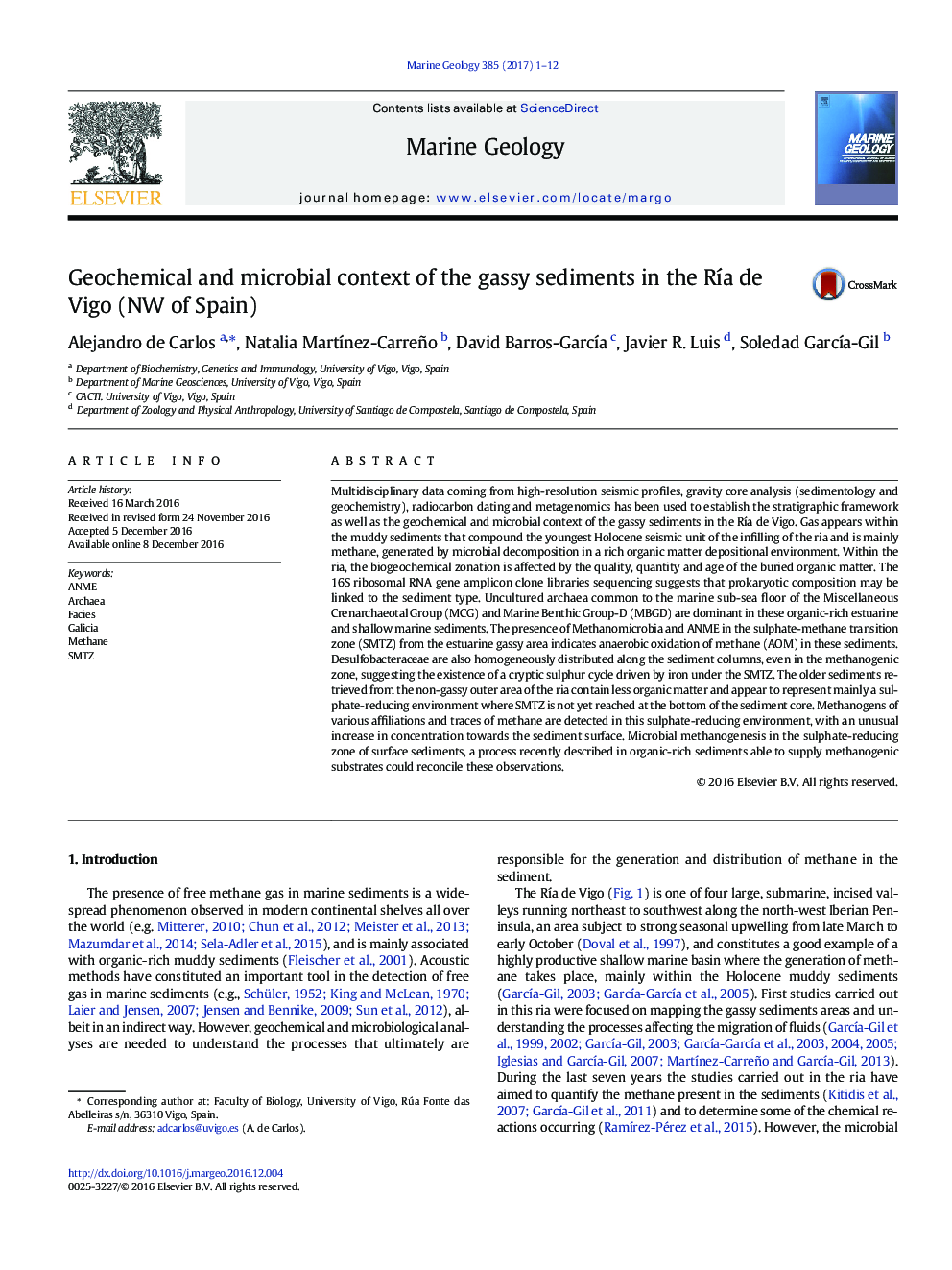| کد مقاله | کد نشریه | سال انتشار | مقاله انگلیسی | نسخه تمام متن |
|---|---|---|---|---|
| 5784389 | 1639067 | 2017 | 12 صفحه PDF | دانلود رایگان |

- Quality and quantity of organic matter condition the biogeochemical zones in the RÃa de Vigo sediments.
- Archaea belonging to MCG and MBGD are prevalent in the organic-rich sediments of the ria.
- Methylotrophic Methanococcoides and acetoclastic Methanosaeta are the most representative methanogens in the ria sediments.
- ANME-1a and ANME-2c sequences are found in the SMTZ of the gassy estuarine area of the ria.
- The sulphate-reducing zone, from the gassy and non-gassy sampled sediments, contains minor amounts of methane.
Multidisciplinary data coming from high-resolution seismic profiles, gravity core analysis (sedimentology and geochemistry), radiocarbon dating and metagenomics has been used to establish the stratigraphic framework as well as the geochemical and microbial context of the gassy sediments in the RÃa de Vigo. Gas appears within the muddy sediments that compound the youngest Holocene seismic unit of the infilling of the ria and is mainly methane, generated by microbial decomposition in a rich organic matter depositional environment. Within the ria, the biogeochemical zonation is affected by the quality, quantity and age of the buried organic matter. The 16S ribosomal RNA gene amplicon clone libraries sequencing suggests that prokaryotic composition may be linked to the sediment type. Uncultured archaea common to the marine sub-sea floor of the Miscellaneous Crenarchaeotal Group (MCG) and Marine Benthic Group-D (MBGD) are dominant in these organic-rich estuarine and shallow marine sediments. The presence of Methanomicrobia and ANME in the sulphate-methane transition zone (SMTZ) from the estuarine gassy area indicates anaerobic oxidation of methane (AOM) in these sediments. Desulfobacteraceae are also homogeneously distributed along the sediment columns, even in the methanogenic zone, suggesting the existence of a cryptic sulphur cycle driven by iron under the SMTZ. The older sediments retrieved from the non-gassy outer area of the ria contain less organic matter and appear to represent mainly a sulphate-reducing environment where SMTZ is not yet reached at the bottom of the sediment core. Methanogens of various affiliations and traces of methane are detected in this sulphate-reducing environment, with an unusual increase in concentration towards the sediment surface. Microbial methanogenesis in the sulphate-reducing zone of surface sediments, a process recently described in organic-rich sediments able to supply methanogenic substrates could reconcile these observations.
Journal: Marine Geology - Volume 385, 1 March 2017, Pages 1-12